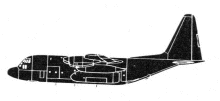Incident Overview

Description
The aircraft departed Nairobi (NBO) at 07:17 for the final leg of a London-Heathrow – Athens – Nairobi – Lusaka cargo flight. Boeing 707 G-BEBP proceeded to Lusaka at FL310. At 09:07 the flight was cleared to descend to FL110. This altitude was reached at 09:23, 37nm DME from Lusaka. A clearance was then given to descend further down to FL70 in 1000 feet steps. At 09:28 the co-pilot reported that the airfield was in sight. Lusaka then cleared the aircraft to descend to 6000 feet (2221 feet above runway elevation) and moments later a clearance was given to make a visual approach for runway 10. At 09:32 flaps were selected to 50 degrees. Suddenly, at 09:33, the complete right-hand horizontal stabilizer and elevator assembly were seen to separate in flight. The aircraft pitched rapidly nose down and dived vertically into the ground from a height of about 800 feet. The main wreckage was located 3660 m from the runway threshold. CAUSE: “The accident was caused by a loss of pitch control following the in-flight separation of the right hand horizontal stabilizer and elevator as a result of a combination of metal fatigue and inadequate failsafe design in the rear spar structure. Shortcomings in design assessment, certification and inspection procedures were contributory factors.
Primary Cause
Metal fatigue and inadequate failsafe design in the rear spar structure.Metal fatigue and inadequate failsafe design in the rear spar structure.Share on:





